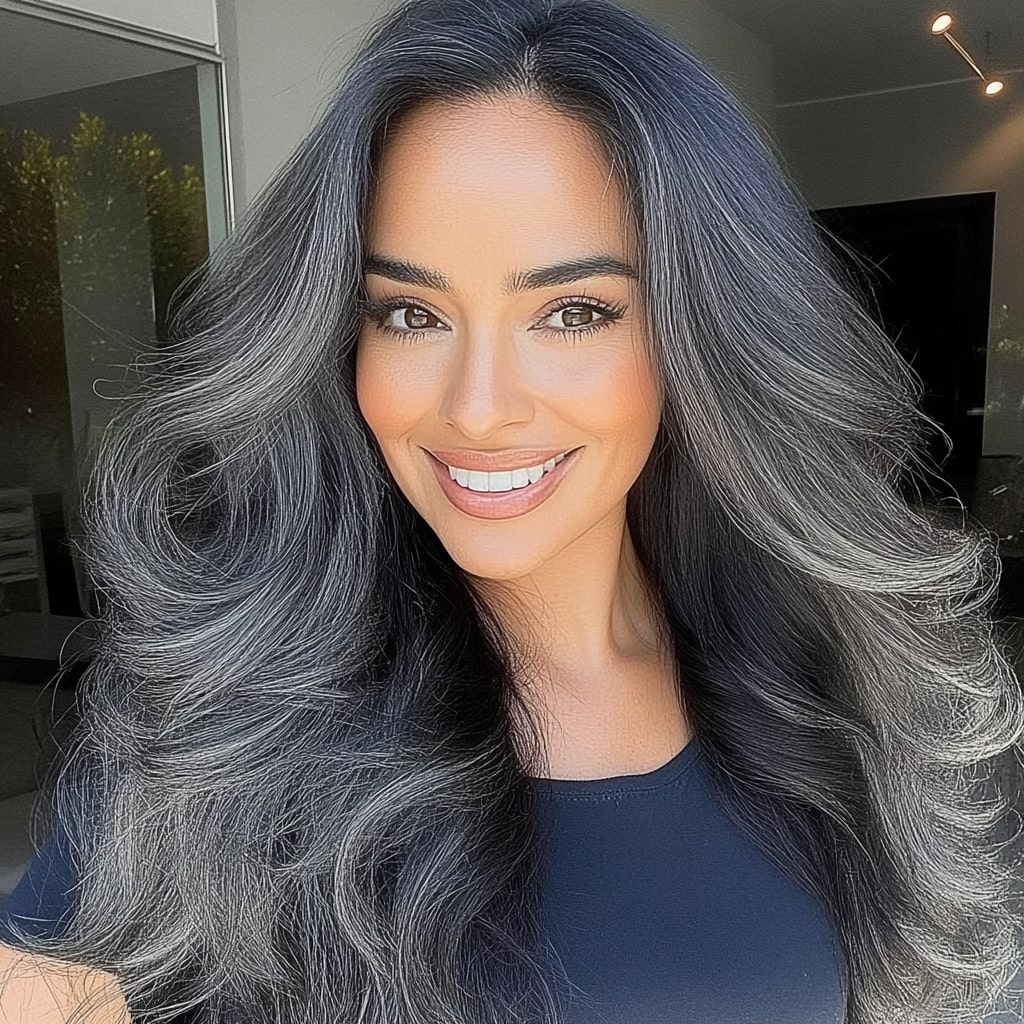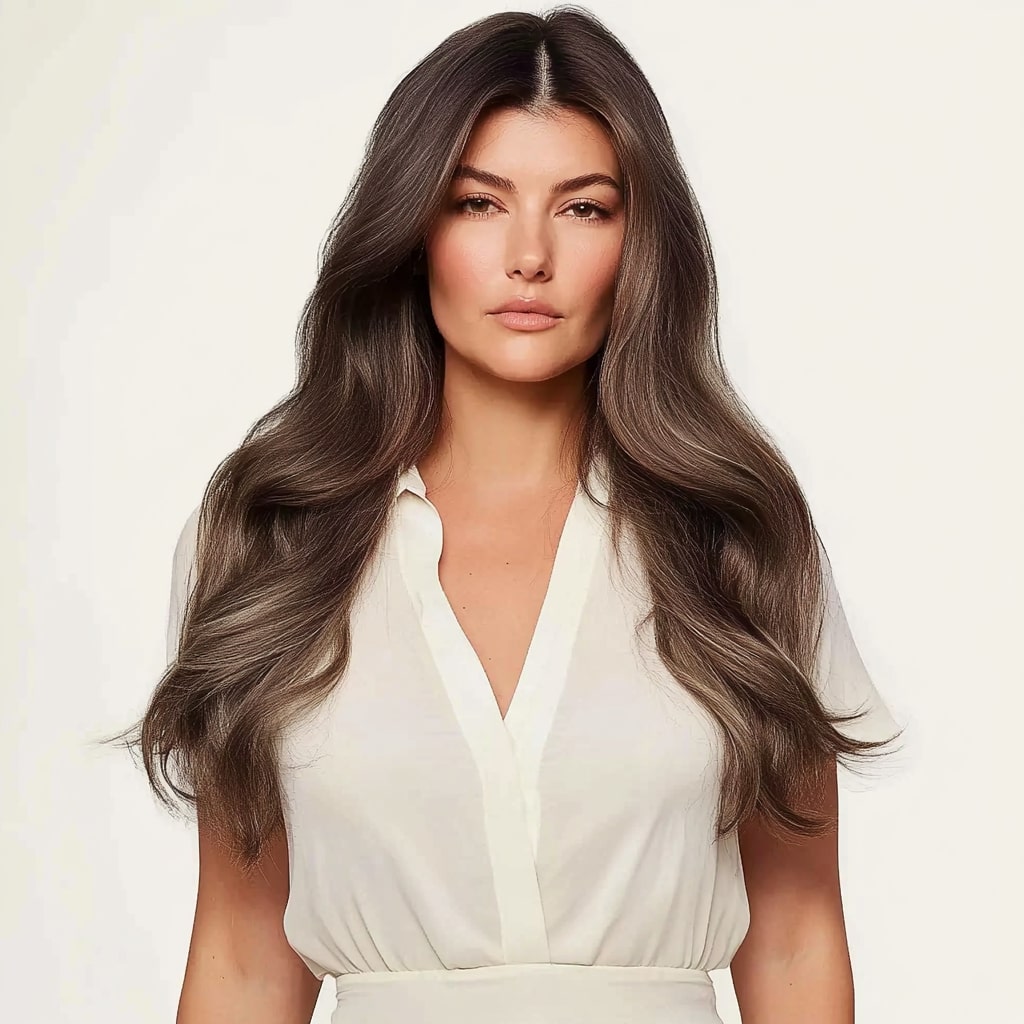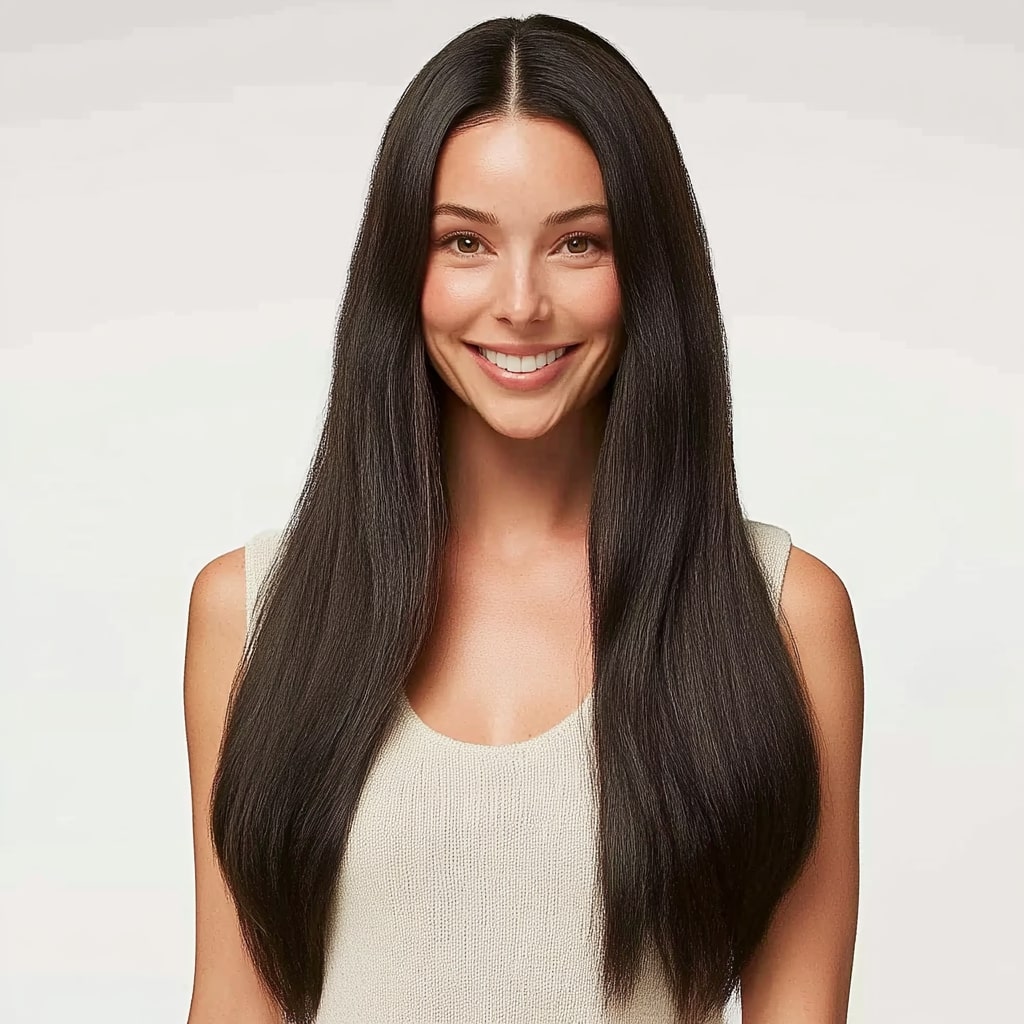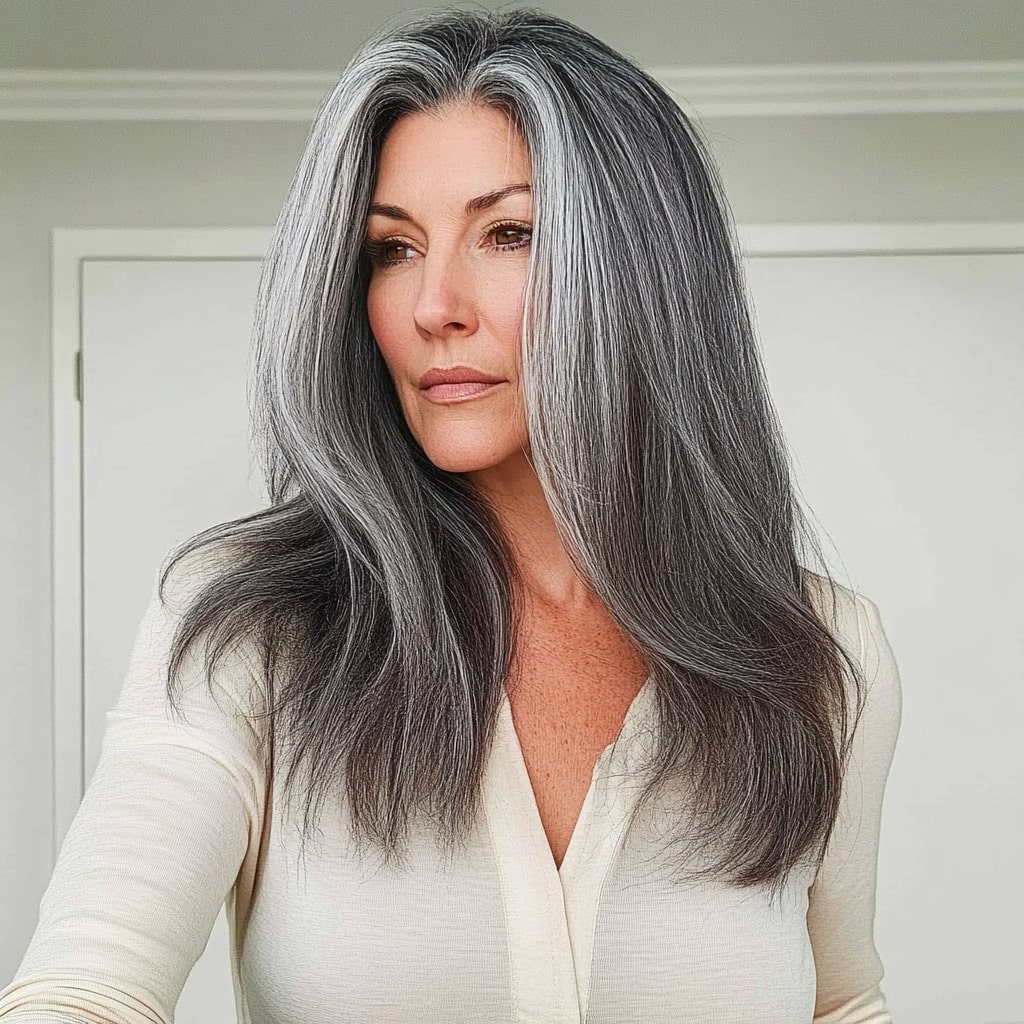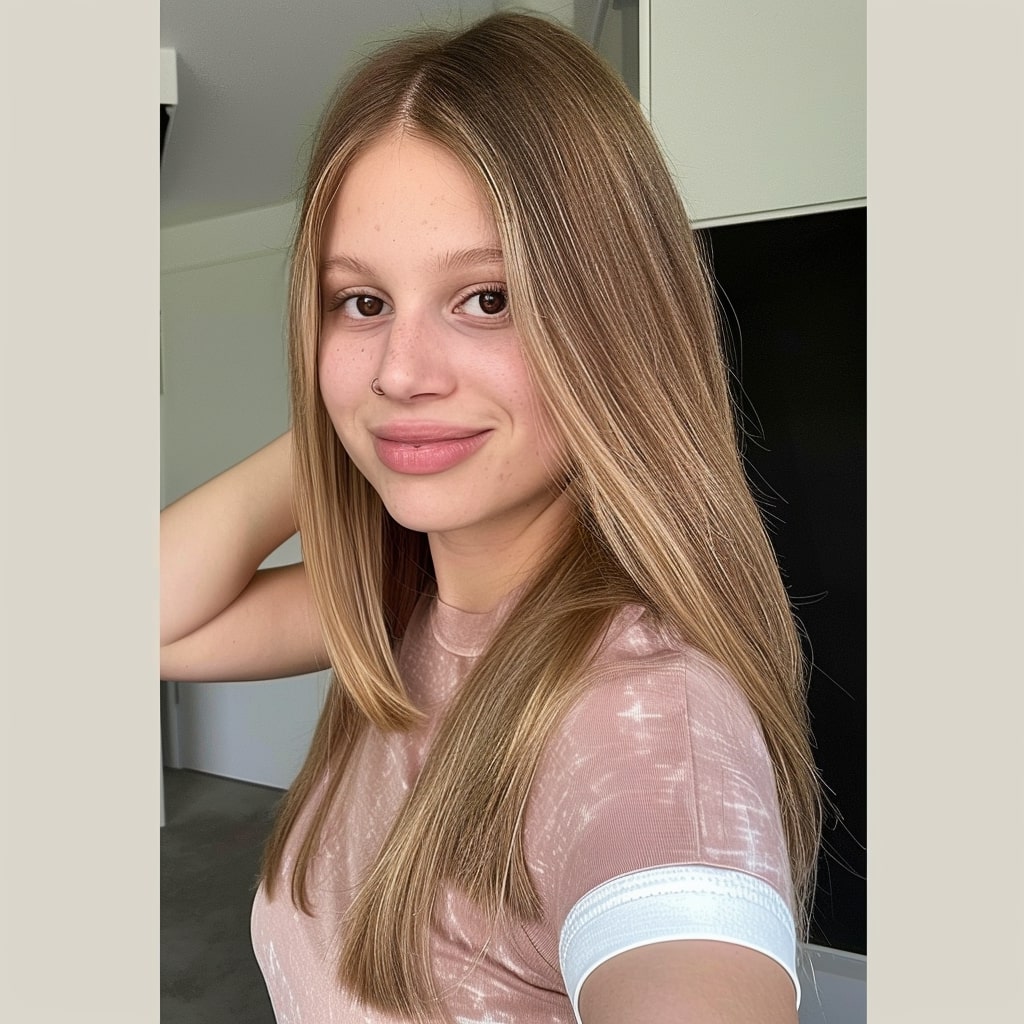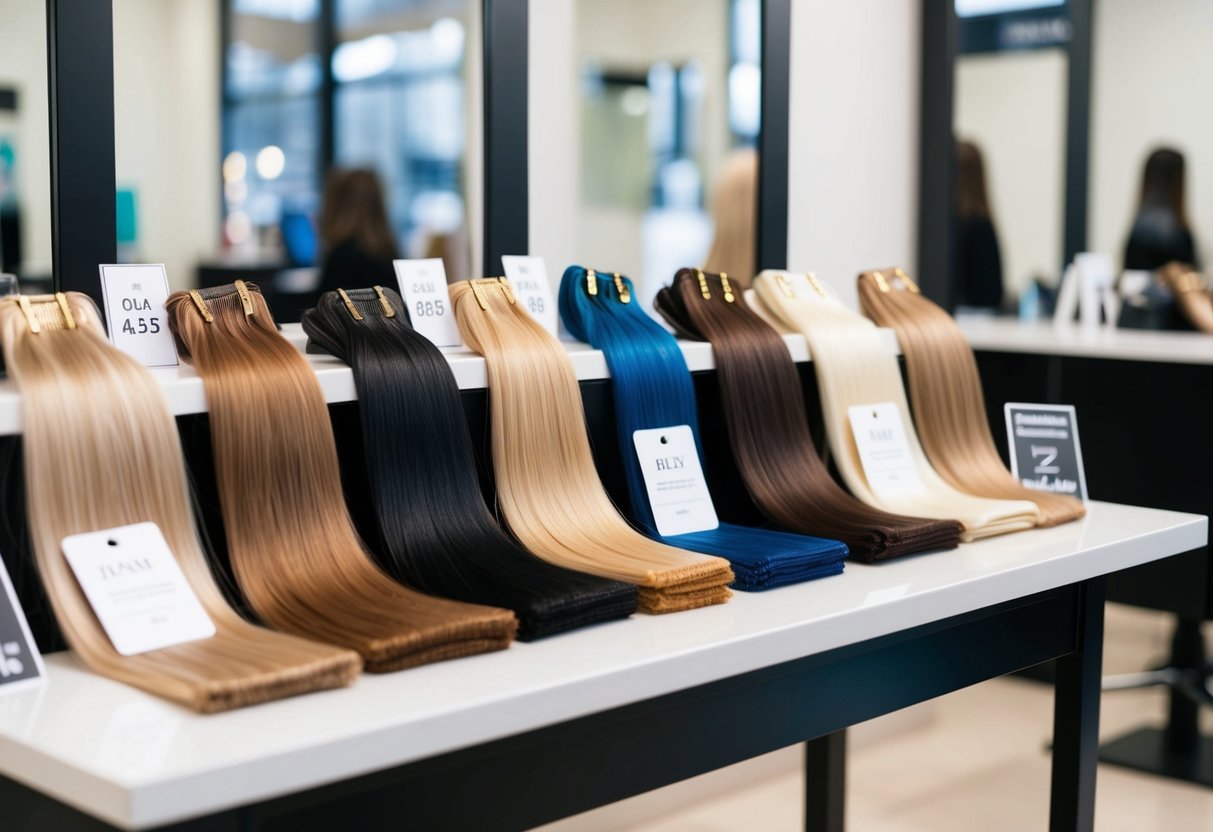Can I Use Hair Extensions If I Have Braids or Weaves?

Key Takeaways
- Hair extensions can be effectively used with braids and weaves to add length, volume, and versatility to your hairstyle.
- Different types of hair extensions such as clip-in, tape-in, sew-in, micro loop, and nano ring extensions can be combined with braids and weaves.
- Proper preparation, installation, and maintenance are essential for ensuring the health of both natural hair and extensions.
- Regular cleaning, moisturizing, and gentle handling are crucial for maintaining extensions.
- Choosing the right type of extensions and following best care practices can help achieve a seamless and beautiful look.
Introduction
Hair extensions have become a popular way to enhance one's look, offering versatility in style, length, and volume. But what if you already have braids or weaves? Can you still enjoy the benefits of hair extensions? In this blog post, we'll explore the compatibility of hair extensions with braids and weaves, providing you with tips and insights on how to effectively combine these hair techniques for a stunning look. Whether you're looking to add length, volume, or simply switch up your style, we'll guide you through the process of using hair extensions with braids and weaves.
Understanding Braids and Weaves
Types of Braids and Weaves
Braids and weaves are two popular hair techniques that offer unique styles and benefits.
Braids: Braiding involves interweaving three or more strands of hair. Common types include box braids, cornrows, and micro braids. Each style offers different aesthetics and maintenance requirements.
Weaves: Weaves involve sewing hair extensions into braided hair. Popular types include sew-in weaves, lace closures, and lace frontals. Weaves offer a seamless look and can be styled like natural hair.
Benefits and Challenges
Benefits: Both braids and weaves offer protective styles that help maintain the health of natural hair by reducing exposure to heat and environmental damage. They also provide the flexibility to experiment with different styles without altering your natural hair.
Challenges: Despite their benefits, braids and weaves require proper maintenance to prevent damage such as breakage or scalp irritation. It's essential to ensure that both styles are not installed too tightly to avoid tension on the scalp and hairline.
Hair Extensions Overview
Types of Hair Extensions
Hair extensions come in various types, each offering unique benefits and application methods:
Clip-In Extensions: These extensions are easy to install and remove, making them ideal for temporary style changes. They come with clips attached to the wefts that you can easily secure to your natural hair.
Tape-In Extensions: Tape-in extensions are applied using adhesive strips. They lie flat against the scalp, offering a natural look and feel. They are semi-permanent and require professional installation and removal.
Sew-In Extensions: Also known as weaves, these extensions are sewn into braided hair using a needle and thread. They offer a secure and long-lasting solution, perfect for those looking for a more permanent style.
Micro Loop Extensions: These extensions use tiny loops to attach to small sections of natural hair. They are also semi-permanent and require professional installation but can be adjusted and reused.
Nano Ring Extensions: Similar to micro loops, nano ring extensions use even smaller rings to attach the extensions. They offer a very discreet and natural look, making them a popular choice for those with fine hair.
Benefits of Hair Extensions
Hair extensions provide numerous benefits, including:
Versatility: They allow you to experiment with different styles, lengths, and colors without altering your natural hair.
Volume and Length: Extensions can add volume and length, enhancing your overall look and boosting your confidence.
Protective Styling: They can protect your natural hair by reducing the need for heat styling and other damaging processes.
Immediate Results: Unlike waiting for your hair to grow, extensions provide instant results, allowing you to achieve your desired look quickly.
Understanding these benefits and types of hair extensions sets the stage for exploring how they can be used effectively with braids and weaves.
Compatibility of Hair Extensions with Braids and Weaves
Clip-In Extensions
Clip-in extensions are a versatile option that can be used with both braids and weaves. They are easy to apply and remove, making them ideal for temporary style changes.
With Braids: Clip-in extensions can be attached to the base of your braids, adding volume and length. This is particularly useful if you want to enhance the fullness of your braided styles without committing to a permanent change.
With Weaves: If you have a weave installed, clip-in extensions can be used to add extra layers or highlights. They can be clipped into the weave tracks, blending seamlessly with your natural hair and the weave.
Tape-In Extensions
Tape-in extensions offer a more permanent solution and can be used with both braids and weaves, although they require professional installation.
With Braids: Tape-in extensions can be applied to small sections of braided hair. It's important to ensure that the adhesive does not come into direct contact with the scalp to avoid irritation.
With Weaves: For those with weaves, tape-in extensions can be added to the tracks of the weave to provide additional volume and length. They lie flat against the scalp, offering a natural look and feel.
Sew-In Extensions
Sew-in extensions, or traditional weaves, are compatible with braided hairstyles as they are often used in conjunction with braids.
With Braids: Sew-in extensions are typically sewn into cornrowed hair. This method is ideal for those who want a long-lasting style and are comfortable with a more permanent installation.
With Weaves: If you already have a weave, adding more sew-in extensions can enhance your current style. This method is best done by a professional to ensure that the additional extensions blend seamlessly with the existing weave.
Micro Loop Extensions
Micro loop extensions are suitable for both braids and weaves, offering a semi-permanent solution that can be adjusted and reused.
With Braids: Micro loop extensions can be attached to individual braids, providing additional length and volume. This method requires careful installation to avoid tension on the scalp.
With Weaves: For weaves, micro loop extensions can be attached to the natural hair at the base of the weave. This adds volume and length while maintaining a natural look.
Nano Ring Extensions
Nano ring extensions are discreet and perfect for those looking for a natural appearance. They are compatible with both braids and weaves.
With Braids: Nano ring extensions can be attached to small sections of braided hair. The tiny rings are almost invisible, making them a great choice for a seamless look.
With Weaves: When used with weaves, nano ring extensions can be added to the natural hair at the weave base. They offer a secure and natural-looking solution, enhancing the overall style.
Understanding the compatibility of different types of hair extensions with braids and weaves allows you to choose the best option for your styling needs. Next, we will explore how to use hair extensions effectively with braids.
How to Use Hair Extensions with Braids
Preparing Your Braids
Before installing hair extensions, it's essential to prepare your braids properly:
- Clean and Condition: Start with clean, well-conditioned hair. This ensures that your natural hair is healthy and can support the extensions.
- Moisturize: Apply a leave-in conditioner or hair oil to keep your hair moisturized. This helps prevent breakage and ensures your braids remain healthy.
- Secure Braids: Ensure your braids are tight and secure but not too tight to avoid tension on the scalp. Loose braids can cause the extensions to slip.
Installing Extensions
Depending on the type of extensions you choose, the installation process will vary:
-
Clip-In Extensions:
- Open the clips on the extensions.
- Starting at the nape of your neck, section off your braids.
- Clip the extensions to the base of your braids, ensuring they are secure.
- Repeat this process, working your way up your head.
-
Tape-In Extensions:
- Section off a small portion of your braided hair.
- Place one tape-in extension underneath the section, adhesive side up.
- Place another tape-in extension on top, sandwiching the braids between the adhesives.
- Press firmly to ensure the extensions are secure.
-
Sew-In Extensions:
- Using a needle and thread, sew the extensions into the base of your braids.
- Ensure the thread matches your hair color for a seamless look.
- Sew along the entire length of the braid, securing the extensions in place.
-
Micro Loop Extensions:
- Take a small section of braided hair and thread it through the micro loop.
- Slide the extension up to the base of the braid.
- Use pliers to clamp the loop shut, securing the extension to your braid.
-
Nano Ring Extensions:
- Similar to micro loop extensions, thread a small section of braided hair through the nano ring.
- Slide the extension up to the base of the braid.
- Use pliers to clamp the ring shut, securing the extension.
Maintenance Tips
Proper maintenance ensures your hair extensions and braids remain in good condition:
- Regular Cleaning: Wash your hair and extensions regularly to prevent buildup. Use sulfate-free shampoos and conditioners.
- Moisturizing: Keep your hair and scalp moisturized. Use lightweight oils or leave-in conditioners to prevent dryness.
- Gentle Handling: Be gentle when styling or brushing your hair to avoid pulling on the extensions.
- Night Care: Protect your hair at night by wearing a satin or silk scarf or using a satin pillowcase. This reduces friction and prevents frizz.
Following these steps will help you achieve a beautiful and seamless look when using hair extensions with braids. Next, we will discuss how to use hair extensions with weaves.
How to Use Hair Extensions with Weaves
Preparing Your Weave
Proper preparation of your weave is crucial before installing hair extensions:
- Clean and Condition: Ensure your weave and natural hair are clean and well-conditioned. This provides a healthy base for the extensions.
- Moisturize: Apply a leave-in conditioner or hair oil to keep both your weave and natural hair moisturized. This prevents dryness and breakage.
- Secure Weave: Make sure your weave is tightly and securely installed. Loose weaves can cause extensions to slip and not blend well.
Installing Extensions
Different types of extensions have specific installation processes:
-
Clip-In Extensions:
- Open the clips on the extensions.
- Section off the weave where you want to add volume or length.
- Clip the extensions onto the weave tracks, ensuring they are secure.
- Blend the extensions with your natural hair and weave.
-
Tape-In Extensions:
- Section off a small portion of your weave.
- Place one tape-in extension underneath the section, adhesive side up.
- Place another tape-in extension on top, sandwiching the weave between the adhesives.
- Press firmly to secure the extensions.
-
Sew-In Extensions:
- Using a needle and thread, sew the additional extensions into the existing weave tracks.
- Ensure the thread matches your hair color for a seamless look.
- Sew along the entire length of the track, securing the extensions in place.
-
Micro Loop Extensions:
- Take a small section of your weave and thread it through the micro loop.
- Slide the extension up to the base of the weave.
- Use pliers to clamp the loop shut, securing the extension to the weave.
-
Nano Ring Extensions:
- Similar to micro loop extensions, thread a small section of your weave through the nano ring.
- Slide the extension up to the base of the weave.
- Use pliers to clamp the ring shut, securing the extension.
Maintenance Tips
Maintaining your hair extensions and weave is essential for a long-lasting, beautiful look:
- Regular Cleaning: Wash your hair and extensions regularly with sulfate-free shampoos and conditioners to prevent buildup.
- Moisturizing: Keep your weave and natural hair moisturized with lightweight oils or leave-in conditioners to prevent dryness.
- Gentle Handling: Handle your hair gently when styling or brushing to avoid pulling on the extensions and weave.
- Night Care: Protect your hair at night by wearing a satin or silk scarf or using a satin pillowcase. This reduces friction and prevents frizz.
By following these steps, you can successfully use hair extensions with weaves, enhancing your style with added volume and length. Next, we will cover tips for maintaining healthy hair with extensions.
Tips for Healthy Hair with Extensions
Proper Care and Maintenance
To ensure your hair and extensions remain healthy and look their best, follow these care and maintenance tips:
- Regular Washing: Clean your hair and extensions regularly using sulfate-free shampoos and conditioners. This helps to prevent buildup and keeps your hair fresh.
- Deep Conditioning: Use deep conditioning treatments to keep your hair and extensions moisturized and nourished. This helps maintain their softness and shine.
- Detangling: Gently detangle your hair and extensions using a wide-tooth comb or a detangling brush. Start from the ends and work your way up to avoid breakage.
- Avoid Heat Damage: Limit the use of heat styling tools to prevent damage. When using heat, always apply a heat protectant spray to minimize damage.
- Protective Styles: Opt for protective hairstyles such as buns, braids, or twists to reduce stress on your hair and extensions.
Avoiding Damage
Preventing damage is crucial to maintaining the health of your hair and extensions:
- Avoid Tight Styles: Avoid hairstyles that are too tight, as they can cause tension on your scalp and hairline, leading to breakage and hair loss.
- Proper Installation: Ensure that extensions are installed correctly by a professional to prevent damage to your natural hair.
- Regular Breaks: Give your hair regular breaks between extensions to allow your natural hair to recover and prevent long-term damage.
- Scalp Care: Keep your scalp clean and moisturized to prevent dryness and irritation. Regular scalp massages can also promote healthy hair growth.
Recommended Products
Using the right products can make a significant difference in maintaining healthy hair with extensions:
- Sulfate-Free Shampoo: Gentle on both natural hair and extensions, preventing dryness and damage.
- Leave-In Conditioner: Provides extra moisture and helps detangle hair, keeping it soft and manageable.
- Hair Oils: Lightweight oils like argan oil or jojoba oil can keep your hair and extensions hydrated and shiny.
- Heat Protectant: Essential for protecting your hair from heat damage when using styling tools.
- Wide-Tooth Comb: Helps to detangle hair gently without causing breakage.
Following these tips will help you maintain healthy hair while enjoying the versatility and beauty of hair extensions. Up next, we'll wrap up with the conclusion.
Conclusion
Using hair extensions with braids or weaves can be a fantastic way to add length, volume, and versatility to your hairstyle. By understanding the different types of extensions and how they can be effectively combined with braids and weaves, you can achieve a stunning, seamless look that enhances your natural beauty.
Proper preparation, installation, and maintenance are key to ensuring that both your natural hair and extensions remain healthy and look their best. Remember to choose the right type of extensions for your specific needs, and always follow best practices for care and maintenance.
Whether you're looking to switch up your style for a special occasion or seeking a long-term hair solution, hair extensions offer endless possibilities. Embrace the flexibility and creativity that extensions provide, and enjoy the confidence that comes with a beautiful, well-maintained hairstyle.
Explore our range of high-quality hair extensions at USA Hair or USAHair.com, and discover the perfect extensions to complement your braids or weaves. With the right approach, you can enjoy the best of both worlds, achieving a look that's uniquely yours.
FAQ
1. Can I use clip-in extensions with braids? Yes, clip-in extensions can be easily attached to the base of your braids to add volume and length.
2. Are tape-in extensions suitable for weaves? Yes, tape-in extensions can be added to the tracks of a weave, providing additional volume and length with a flat, natural look.
3. How often should I wash my hair extensions? Wash your hair extensions regularly, about once a week, using sulfate-free shampoo and conditioner to prevent buildup.
4. Can I use heat styling tools on my hair extensions? Yes, but use a heat protectant spray to minimize damage and limit the use of heat styling tools to avoid excessive heat exposure.
5. What type of hair extensions are best for a long-lasting style? Sew-in extensions are ideal for a long-lasting style as they are securely sewn into braided hair.
6. How do I prevent my extensions from slipping? Ensure that your braids or weave are tight and secure, and follow proper installation techniques to keep extensions in place.
7. Can I sleep with my hair extensions? Yes, but protect your hair at night by wearing a satin or silk scarf or using a satin pillowcase to reduce friction and prevent frizz.
8. What should I do if my scalp feels irritated after installing extensions? Ensure the extensions are not too tight, and keep your scalp clean and moisturized. If irritation persists, consult a professional.
9. How do I detangle my hair extensions? Use a wide-tooth comb or detangling brush, starting from the ends and working your way up, to gently detangle your hair.
10. How long can I keep hair extensions installed? The duration varies by type, but typically, extensions can be kept for 6-8 weeks with proper care. It's essential to give your hair regular breaks between installations.

 My Store Credit
My Store Credit
 Buy Again
Buy Again

